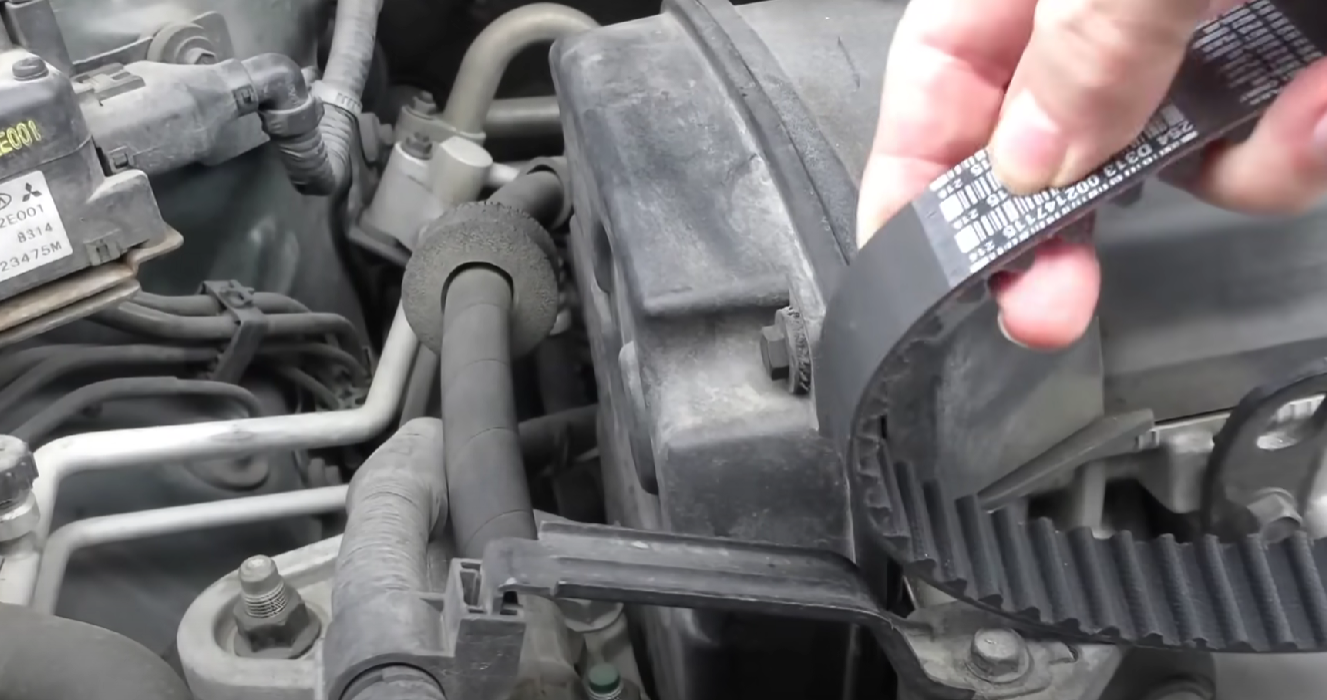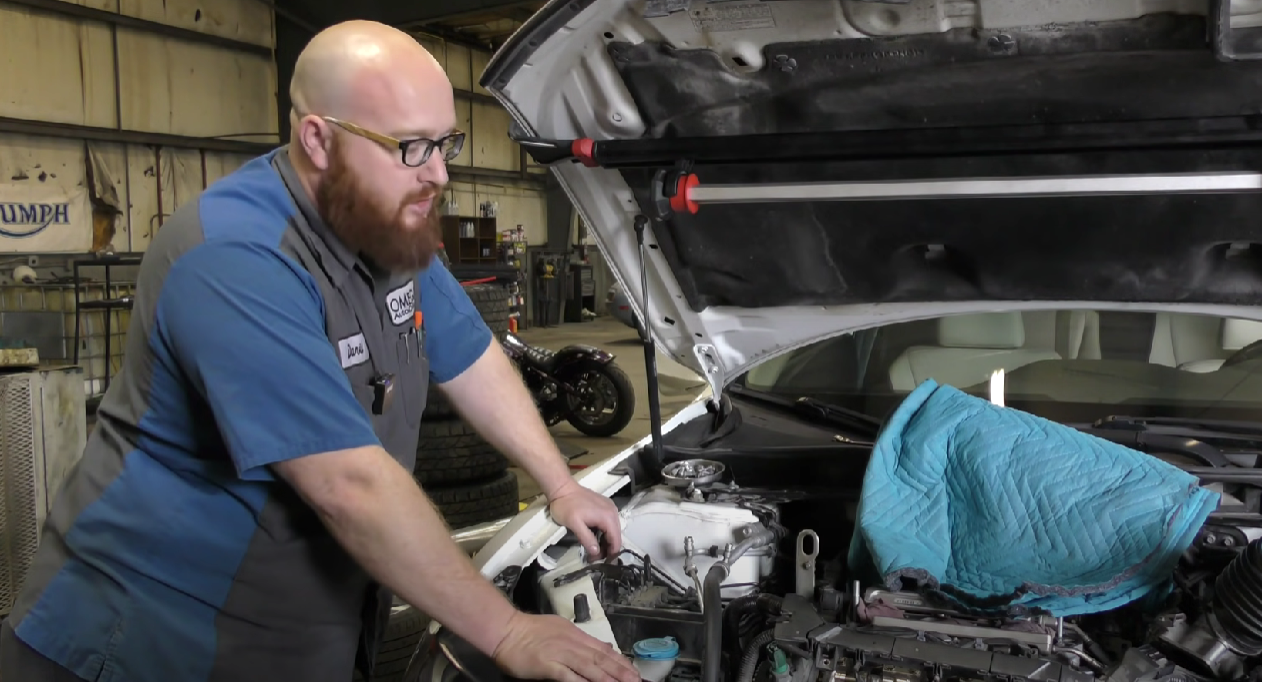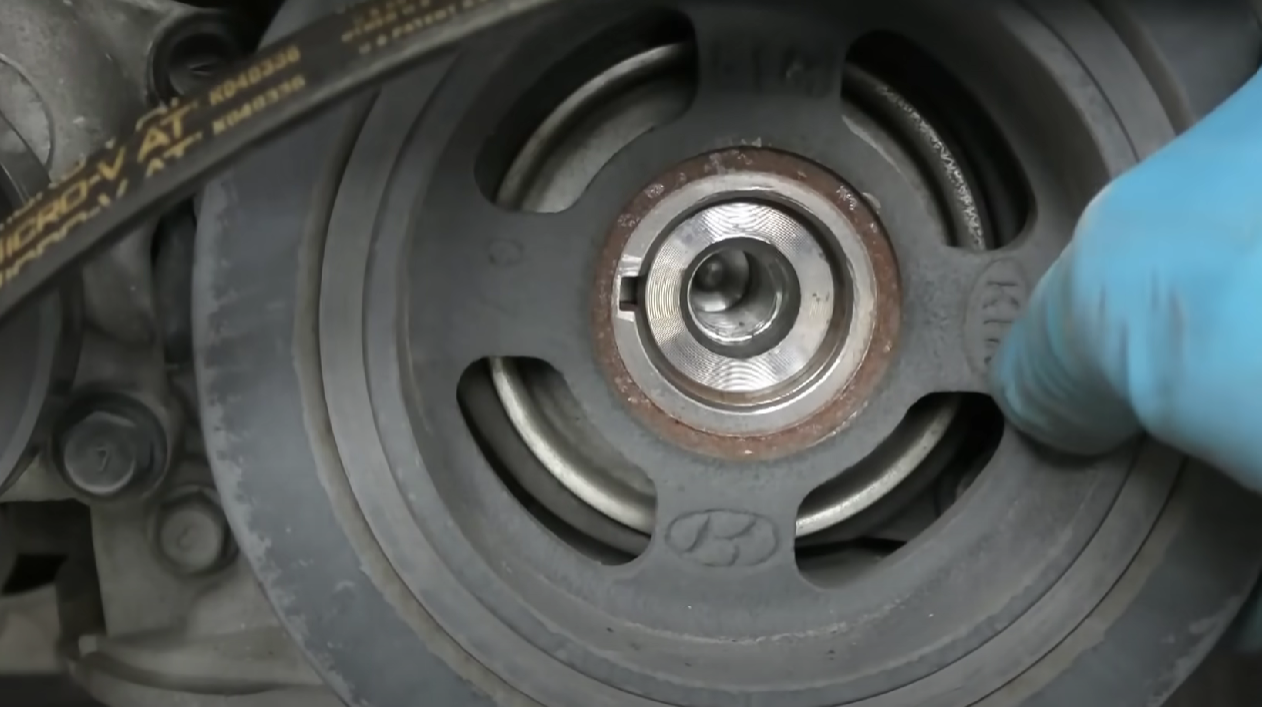Replacing a timing belt is a crucial maintenance task for many vehicles. The cost varies depending on factors like your car’s make and model, labor fees, and additional parts required.
This article will delve into these factors to help you understand the potential expenses involved in this essential automotive procedure.
How Much Does It Cost to Replace a Timing Belt?
When it comes to replacing a worn-out timing belt, the expense typically ranges between $300 and $500.
This cost variation is due to the complexity of accessing the timing belt in numerous vehicles, often requiring extensive disassembly and subsequent reassembly to access and replace the belt.
What is a Timing Belt?
A timing belt, also known as a camshaft or synchronous belt, is a crucial component in an internal combustion engine. It’s in charge of synchronizing the crankshaft and camshaft’s rotations, keeping the engine valves open and close at the precise times required for proper combustion.

This synchronization is vital for the engine’s optimal performance, and if the timing belt fails, it can lead to significant engine damage. Therefore, timely replacement is essential to prevent costly repairs.
What Are the Different Warning Signs a Timing Belt Replacement is Needed?
Recognizing the warning signs of a timing belt in need of replacement is crucial to avoid engine damage and costly repairs. Several indicators can signal that it’s time to address this essential maintenance task:
- Engine Misfires. Frequent engine misfires or a noticeable reduction in performance can be a sign that the timing belt is worn, affecting the engine’s precise timing.
- Ticking or Clicking Noises. Unusual ticking or clicking sounds coming from the engine can indicate belt wear or tensioner issues, both of which can jeopardize the timing belt’s integrity.
- Visible Cracks or Fraying. Inspect the timing belt for visible cracks, fraying, or damage. Any signs of wear should prompt immediate replacement.
- Oil Leaks. A leaking front engine cover or seals can be caused by a deteriorating timing belt, as oil can break down the belt’s rubber material.
- Excessive Vibration. Vibrations or shaking sensations while driving may result from the timing belt slipping or losing its grip on the pulleys.
- Engine Overheating. An overheating engine [1] can be linked to timing belt problems, as it affects the proper functioning of the water pump, which is often driven by the timing belt.
- Warning Lights. The check engine light or a specific timing-related warning light may illuminate your dashboard, signaling a potential issue.

What Are the Benefits of Timely Replacement of the Timing Belt?
Timely replacement of the timing belt offers numerous benefits, ensuring the smooth and efficient operation of your vehicle’s engine while preventing potentially costly damage and repairs. Here are the key advantages:
- Engine Performance. A new timing belt maintains the synchronization of the crankshaft and camshaft, optimizing engine performance and power output.
- Prevents Engine Damage. A worn timing belt can break, causing severe engine damage. Replacing it before this happens prevents costly repairs.
- Improved Fuel Efficiency. Proper timing enhances combustion, leading to better fuel efficiency and reduced emissions.
- Enhanced Reliability. A new belt reduces the risk of unexpected breakdowns and improves the overall reliability of your vehicle.
- Extended Engine Life. Regular timing belt replacements contribute to the longevity of your engine by preventing wear-related issues.
- Cost Savings. Proactive timing belt replacement is more cost-effective than repairing engine damage resulting from a broken belt.
- Reduced Downtime. Timely replacement minimizes the time your vehicle spends in the shop, reducing inconvenience.
- Peace of Mind. Knowing your timing belt is in good condition provides peace of mind and confidence in your vehicle’s performance.
Cost-Related Factors in Replacing a Timing Belt
The cost of replacing a timing belt can vary significantly depending on several key factors. Understanding these cost-related factors can help you budget for this essential maintenance task effectively:
Vehicle Make and Model
Different vehicles have varying levels of complexity when it comes to accessing and replacing the timing belt. Some may require more labor and time, impacting the overall cost.
Labor Fees
Labor costs are a substantial portion of the overall expense. Labor rates vary by location, with higher costs in urban areas and at dealerships compared to independent mechanics.

Additional Parts
Timing belt replacement often involves replacing related components like tensioners, pulleys, and the water pump. The need for these additional parts can significantly affect the total cost.
Timing Belt Type
The type and quality of the timing belt chosen can impact the cost. Some vehicles may require specific, more expensive belts, while others can use more affordable options.
Local Market Conditions
Regional market conditions and competition among service providers can influence pricing. It’s advisable to obtain quotes from multiple shops to ensure a fair price.
DIY Versus Professional Installation
While some experienced car owners may attempt a DIY timing belt replacement to save on labor costs, it’s a complex task best left to professionals. Mistakes can lead to costly engine damage.
Warranty Coverage
If your vehicle is under warranty, the cost of timing belt replacement may be partially or fully covered, depending on the warranty terms.

Preventative Maintenance
Regularly changing the timing belt at the manufacturer’s recommended intervals can save money by preventing more extensive engine damage in the long run.
Can You Drive With a Bad Timing Belt?
Driving with a bad timing belt is not advisable and can lead to severe engine damage.
The timing belt plays a crucial role in synchronizing the movement of the engine’s crankshaft and camshaft, ensuring that valves open and close at the right times during the combustion cycle. If the timing belt fails while driving, it can cause the following issues:
- Engine Stalling. A broken timing belt can cause the engine to stall suddenly, leaving you stranded on the road.
- Loss of Power. As the engine loses synchronization, it may lose power and run poorly, making it challenging to accelerate or maintain speed.
- Valve and Piston Collisions. In interference engines (common in most modern cars), a failed timing belt can lead to collisions between the valves and pistons, causing extensive engine damage, such as bent valves, damaged pistons, and cylinder head damage. Repairing this type of damage is expensive.
Conclusion
The cost of timing belt replacement varies depending on factors like vehicle type, labor rates, and additional part requirements. Ensuring timely replacement is essential to prevent potentially costly engine damage and maintain the reliability of your vehicle.

